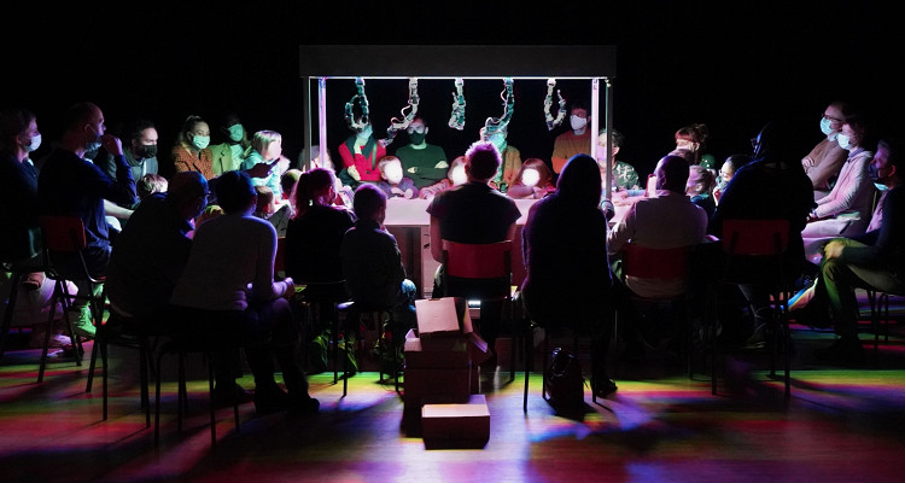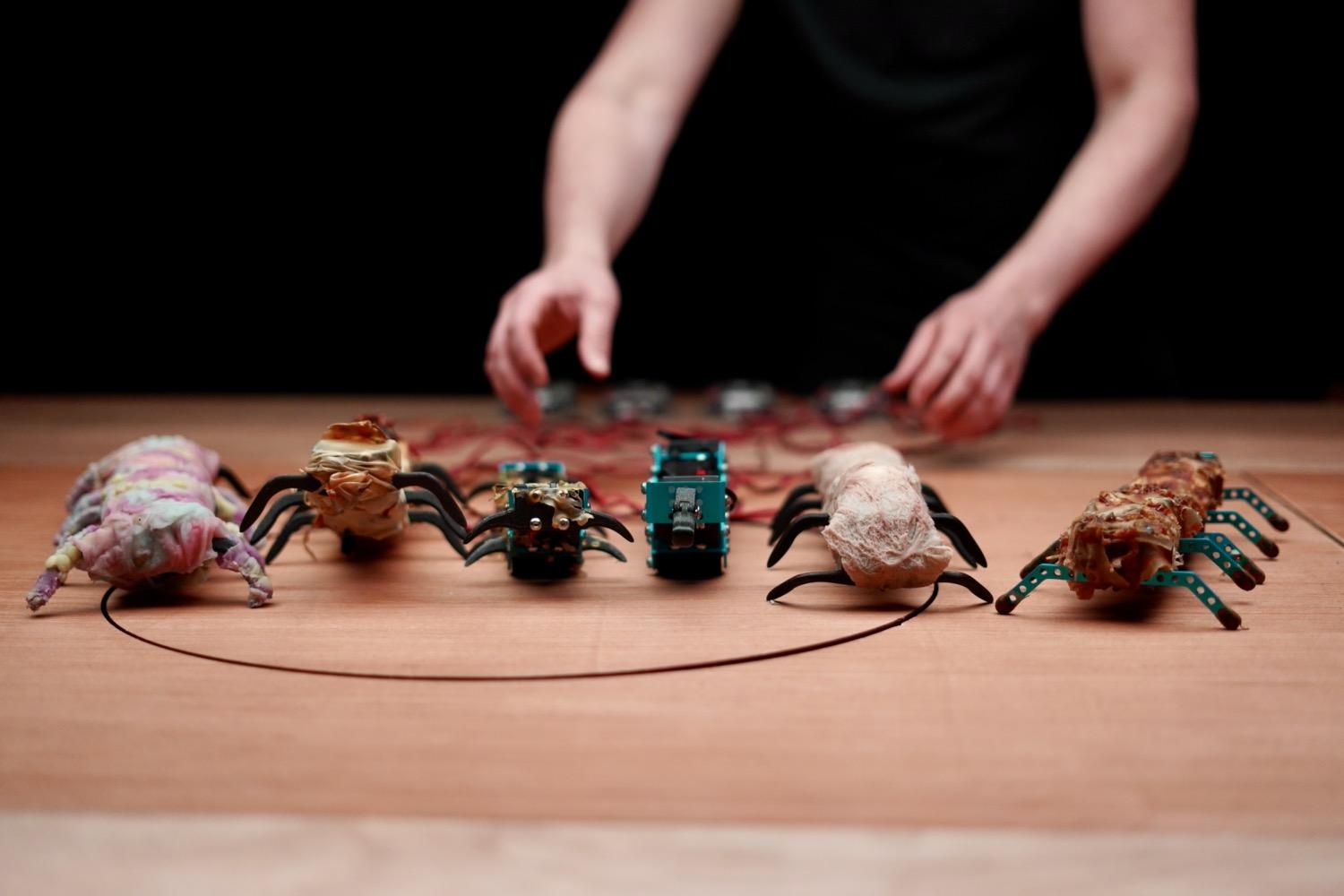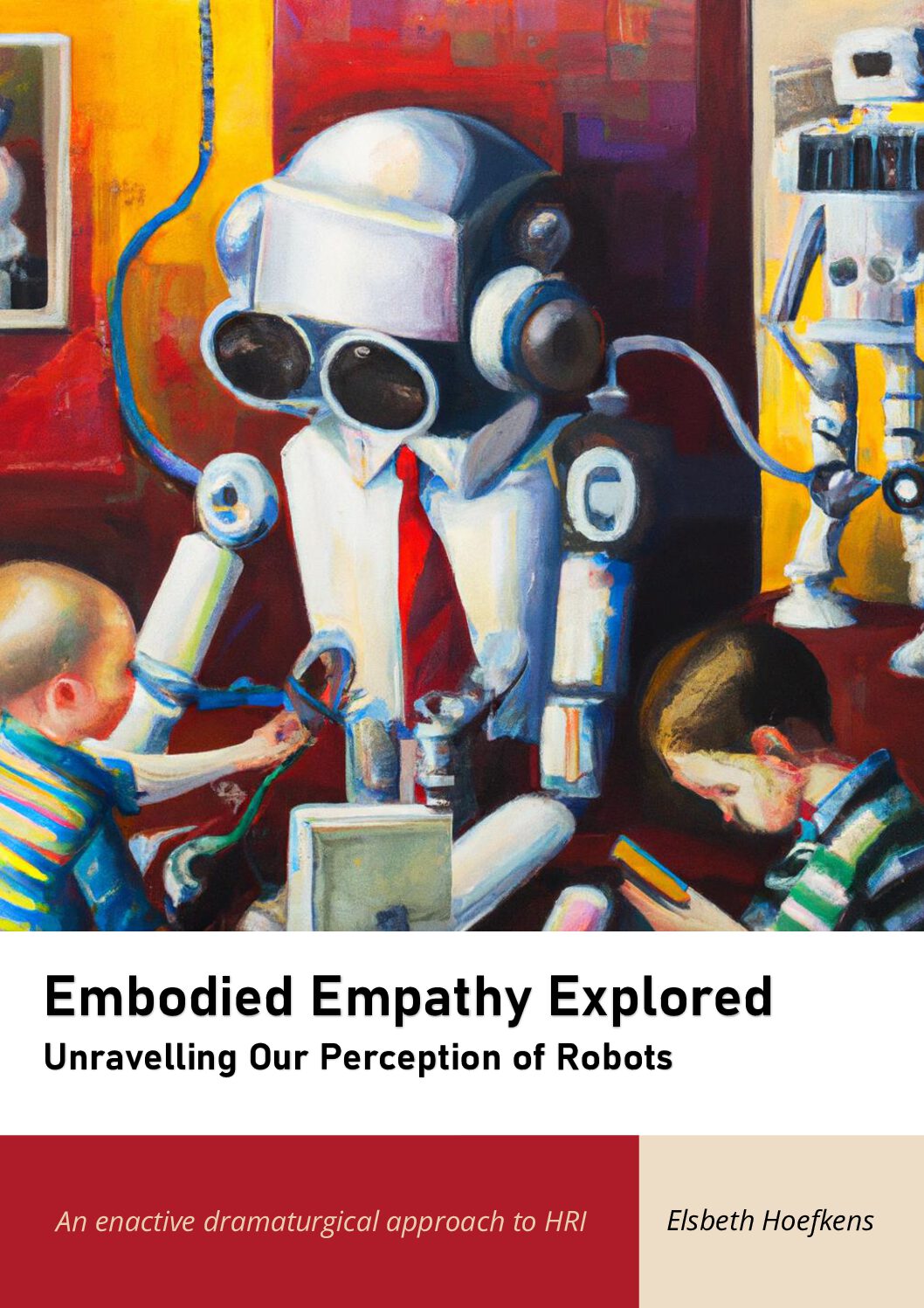Elsbeth wrote her master’s thesis, “Embodied Empathy Explored: Unravelling Our Perception of Robots” (2023), as part of the Contemporary Theatre, Dance and Dramaturgy programme at Utrecht University. This research lay at the intersection of performance and robotics. She investigated how dramaturgical insights from performance might be relevant to the field of robotics, analysing two robots: a social robot named Phi and a robot featured in Simple Machines (2019), a performance by choreographer Ugo Dehaes. Elsbeth explored how our embodied perception of robots is formed and posed the question: How do robots evoke empathy? Her research also advocates for the importance of creativity and imagination in the design of human-robot interaction, showing how the performing arts can play a vital role in this area, with questions like, ‘What else might a robot look like?’ and ‘What if this were a robot?’
In her analysis of the two robots, Elsbeth demonstrates that there is a difference in how each robot evokes empathy, a key element in human-robot interaction (HRI). The social robot does so mainly through its human-like appearance, while the artistic robot evokes empathy by suggesting the idea of a growing entity. From this perspective of robots as growing beings, Elsbeth poses compelling questions within the broader field of robotics, such as: ‘How would perception change if a robot reached a certain age?’, ‘What does human responsibility mean in relation to growing robots?’ and ‘How do we define intelligence within and beyond robotics?’
Robots presented in Simple Machines, n.d. (Photos: Arne Lievens)

Setting of performance Simple Machines by Ugo Dehaes, n.d. (Photo: Arne Lievens)

All robots that are part of the growth process positioned in the order of ‘growing up’, presented in Simple Machines by Ugo Dehaes, n.d. (Video: Ugo Dehaes)
Reclining StickMan by Stelarc, 2020. (Photo: Saul Steed)


